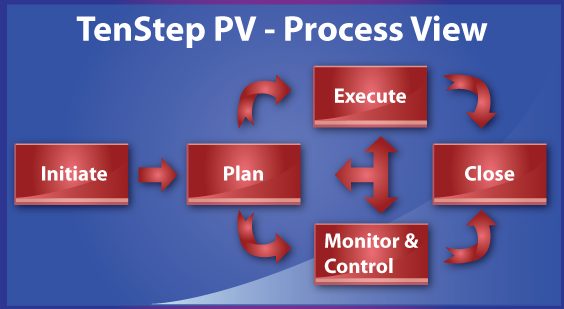
(2.0P.P1)
The Initiation process validates that the project is ready to start. you have ensured the project is still valid, the sponsor is ready and the project manager is in place. However, you are not ready to actually begin executing the project and building the deliverables. At this point you don’t know the deliverables, the resources required, the timeframe, the schedule, the risks, etc. Yes, you might know this information at a very high level from the Business Case. But you don’t know nearly enough details to be able to actually start project execution.
Before you begin execution you must first plan. If you have a small project the planning may be relatively easy and short. Perhaps it is just validating the deliverables, creating a task list, understanding the client expectations and then start. On the other hand, a very large project may take weeks or months to plan at the level that is appropriate enough to begin execution. The answer to the question of “how long should you take to plan a project” is “sufficient time”.
This is a key point. You need to plan at a “sufficient” level to be confident of success. If you do not plan enough, there is a good chance you will encounter problems and not be as successful as you want to be. If you spend too much time planning you are not providing value and you are wasting time and resources that you could be spending executing.
The planning process contains many potential elements and it is important to understand which elements are of value to you. Generally the larger your project, the more elements will be of value. For example, if you have a project that does not have a vendor component, the Vendor Management Plan will not be relevant. If you have a very large project with multiple important and integrated vendors, the Vendor Management Plan may be absolutely vital.
The following processes are used to sufficiently plan the project.
-
2.1P Define the Work / Process
-
2.1T Define the Work / Techniques
-
-
2.2P Build the Schedule and Budget / Process
-
2.2T Build Schedule and Budget / Techniques
-
-
2.3P Plan Communications
-
2.3T Plan Communication / Techniques
-
-
2.4P Plan Risk Management
-
2.4T Plan Risk / Techniques
-
-
2.5P Dev HR
-
2.5T Dev HR / Techniques
-
-
2.6P Plan Quality
-
2.6T Plan Quality / Techniques
-
-
2.7P Define Metrics
-
2.7T Define Metrics / Techniques
-
-
2.8P Plan Procurements
-
2.8T Plan Procurements / Techniques
-
-
2.9P Plan Stakeholder Management
